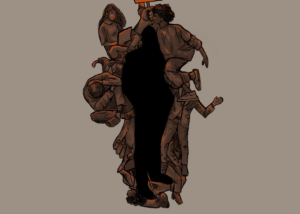The statistics on sexual assault, while oft repeated, somehow never lose their ability to shock. Somewhere between one in four and one in five women is a victim of rape or attempted rape during her lifetime. The majority of these incidents involve young women, making college campuses one of the most dangerous environments for women.
Unfortunately, life on college campuses often also poses a problem from a judicial standpoint. More often than not, sexual assault incidents involve alcohol consumption by one or both parties involved. This, combined with the “he said-she said” scenario that such incidents usually produce, means that district attorneys often shy away from pursuing criminal charges of sexual assault on campus. And students are typically just as interested in avoiding taking their cases to the courts; after their horrible experiences, few rape victims place a high enough premium on formal closure to spend an additional year or two in a courtroom that is far from home. Most would rather move on.
This is why a well-functioning university-run disciplinary process is critical to any campus. University discipline systems can be uniquely equipped to handle crime on campus, and can take action to protect students and the community as a whole much more quickly and effectively than local government.
Sadly, the organization of Georgetown University’s discipline and conduct system fails in many regards to live up to this standard, making it a process to be dreaded by many students who are in need of efficient and fair adjudication. The process has two main deficiencies. First, individual hearings are only permitted to discuss a single incident. Other incidents involving the same “respondent” (the system’s equivalent of a defendant) are to be handled separately. The system does call for one hearing for multiple respondents if they are all involved in the same incident. But separating individual incidents simply prolongs the process, especially when the issue at hand is whether or not the respondent’s actions were intended maliciously. Having single hearings for similar incidents involving the same student would streamline the process and help identify patterns of behavior that pose a real threat to the community.
Secondly, the process places a great deal of pressure and responsibility on the “complainant” (the plaintiff), usually requiring the student to run their entire case. This has its advantages; namely, that it gives complainants control over the progress of the hearing. If at any point the student decides that they do not want to bring a complaint, the entire process can be dropped. Students pursuing a criminal case in local courts would not have this option. Yet this system also has its pitfalls; for many students, the time and effort required to produce a case is such a heavy addition to their regular workload that pursuing a complaint has to be weighed against maintaining their academic standing. Reorganizing the system so that students have greater help from administrators in formally organizing their complaints would be a step in the right direction. While it would most certainly require the investment of more administrative resources, those resources would be well used.
The disciplinary system may as well not exist if it deters students from pursuing justice. Designing a student conduct system which is both effective and efficient should be a high priority for administrators.



